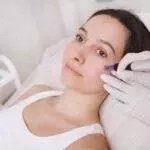Acne is the most prevalent skin problem, especially in individuals with oily skin. While excess sebum production is the immediate cause of blocked pores, there are a couple of triggers behind the long-extending development of acne. Over the years, extensive research on acne by dermatologists has unfolded into impressive breakthroughs and shown great promise; however, the aftermath remains a challenge. Skin trauma caused by acne leaves a trail of stubborn blemishes and dark spots post-treatment- while the acne scars can heal naturally over time, several remedies can speed up the process.
Six effective ways to get rid of acne scars
Acne is triggered by a myriad of internal and external factors- some of which are beyond our prevention grasp. Living with acne is inevitable for some people; pimple scarring, however, is something you can take complete control of. We’re looking into six acne marks relief approaches, from simple home solutions like blotting paper to monthly medical remedies.
Salicylic acid
Salicylic acid is a significant ingredient present in most acne treatment packages due to its cleansing properties. Fundamentally, salicylic acid is a natural pore cleanser that rids your skin of any debris, dead skin cells, and dirt that could potentially build up to acne. Incorporating Salicylic acid into your daily skincare regimen also helps minimize swelling and redness, consequently reducing the appearance of scars. Important note: salicylic acid can have a drying and irritating effect, especially on sensitive skin; it’s, therefore, advisable to do a skin patch test.
Retinoids
Investing in topical retinoids can significantly assist in fighting acne scars- retinoids work by blocking inflammation and minimizing lesions concurrent with pimple scars. Additionally, retinoid therapy speeds up cell regeneration while lightening skin hyperpigmentation, rapidly healing blemishes, and reducing pimple marks appearance, respectively. However, retinoids make your skin sensitive to the sun, so consider lathering up that sunscreen every time you go out wearing a retinoid.
Alpha hydroxy acid
AHAs are a doctor-recommended acne treatment compound- this mild acid scrapes off the epidermal layer to reveal a fresh, glowing layer of your skin. As AHAs peel off the outer layer of your skin, they take with it any discoloration and light traces of scars. Alpha hydroxy acids also rid your skin of any dead cells preventing clogged pores that link to acne. Ideally, combining charcoal blotting paper with your AHAs routine will help disintegrate any oils and sweat to reveal a new refreshed layer of skin.
Chemical peels
The world of dermatology has developed several chemical peels targeted at various skin-related problems, and acne is no exception. From the range of chemical peels available in the market today, one’s choice ultimately comes down to their severity and scarring type. However, trichloroacetic acid (TCA) is the most effective chemical peel for acne scars, with a 70% improvement review. Glycolic and lactic acid also make for impressive acne-relief chemical peels; the key is to keep an open mind in trying out different peels to find one that matches your needs.
Micro-needling
Micro-needling is one of the most effective acne spots treatment approaches, especially if you’re looking to get drastic results. How does it work? Tiny needles are inserted and rolled into the skin surrounding your scar; this results in micro lacerations. In response, your body produces collagen, which stimulates the smoothing of your skin and significantly minimizes scar appearance. While micro-needling has the potential to reduce your acne scarring by a rate of 31-62 percent, it does have side effects on some people; redness, inflammation, and pain. The side effects subside with time; however, it’s always best to consult with your dermatologist before seeking out micro-needling as a recovery option.
Dermal fillers
Using soft tissue on acne-affected skin is one way to reduce the appearance of pimple marks. The selection of dermal fillers varies, ranging from collagen-based treatments to hyaluronic acid and polymethylmethacrylate (PMMA). Dermatologists advise carrying out an allergy test and analyzing the acne scars before starting a dermal filler treatment journey. Alternatively, if commercial dermal fillers are not for you, you can always opt for fat removal from your body to derive the soft tissue.
Bottom Line
Acne scars are a common skin concern in individuals with oily skin. While scars are a natural and beautiful reminder of healing, they can impact self-esteem and confidence. Acne scars make most people self-conscious, therefore, acne marks recovery solutions come in handy. Research has facilitated the development of natural and medical formulas to rid the skin of acne scars; the choice of scarring solution ultimately comes down to you and your personal preference. We strongly advise consulting a dermatologist before committing to acne scarring treatment plans. You may also check Dermavel to further understand acne treatment.















